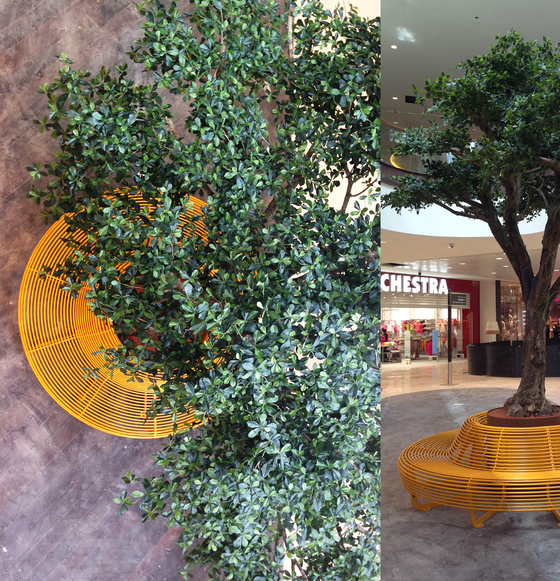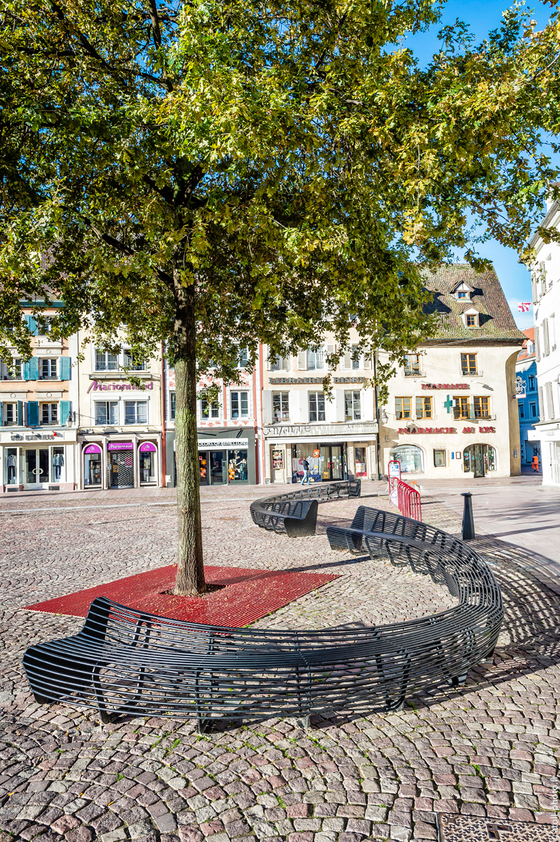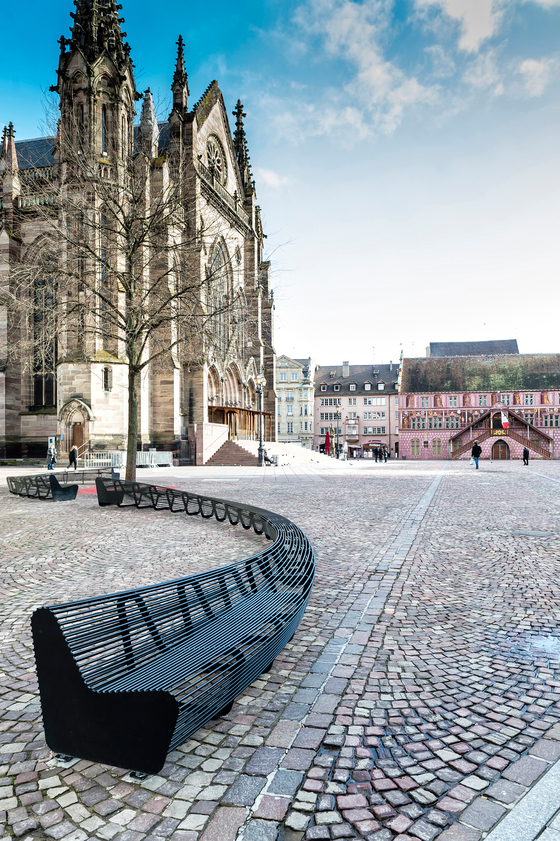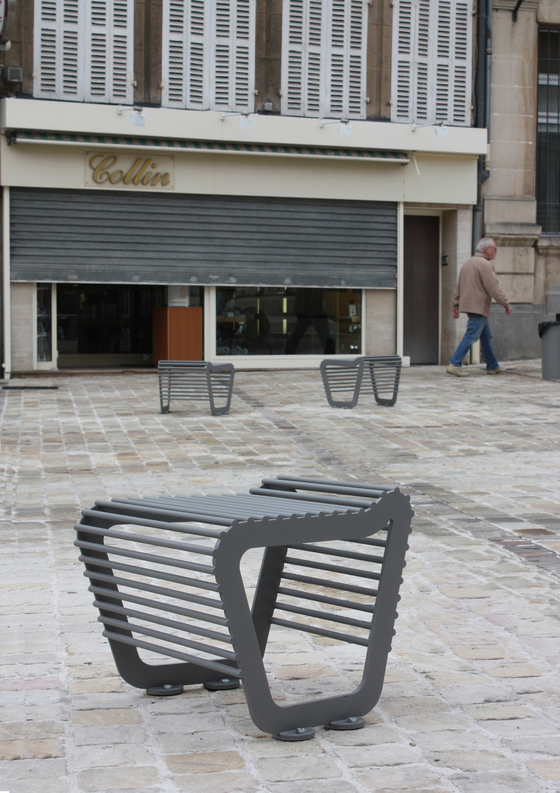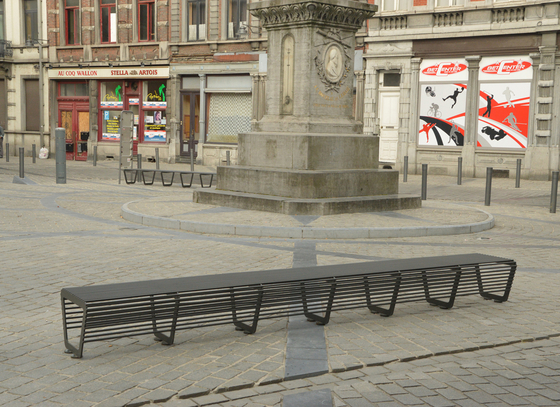The Circular Bench
Urban furniture connected to users
In the space of a decade, the Circular Bench from Belgian designer Lucile Soufflet has attracted a growing number of European cities. Playing on the transformation of its profiles, this circular bench flexibly stretches and extends to create different seats and different perspectives of the surrounding environment. The backrests rise and fall, sometimes facing each other, sometimes all alone. The first Circular Bench was installed in Brussels in 2003 in the Marché aux Grains square. A tree had been placed in the centre of the square at the request of the inhabitants. The City of Brussels wanted an artistic fence work to protect the tree. Lucile Soufflet proposed enlarging on the theme, and only keeping the one of the seat around the tree. Ultimately, the bench extends in a circle, stretching and returning around the tree. The idea was to play on the principle of construction and to create a shape that transforms in a circular way in the space. At the two extremities, the profiles lose their shape, and the backrests appear, creating two facing seats. The theme of relationships in the public space is at the heart of the installation of this furniture that invites dialogue. It is an element both playful and convivial, two indispensable ideas for our community life. For the municipalities, integrating furniture like this in their environment challenges the passer-by, the local resident, the visitor. It invites them to sit, and take some time. It adds to quality of life and wellness. Today, this furniture has attracted other cities and towns in Belgium and France, including SaintPolsurMer, Brussels, Krinkels, Schaerbeek, Mons -2015 European Capital of Culture - and Mulhouse, as well as Sierre in Switzerland. The range has been enriched with new variants: the Solo Bench and Line Bench models, and many made-to-order benches have extended the catalogue.
Diese Seite wurde archiviert und wird nicht mehr aktualisiert

